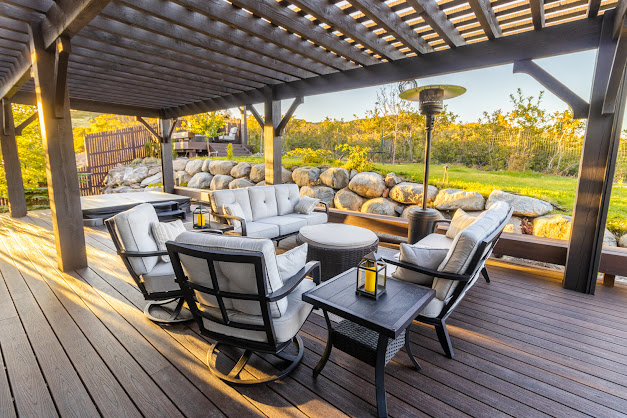The Role of Cross-Bracing and Reinforcement in Timber Frame Pergolas
Timber frame pergolas, often seen adorning outdoor areas, are loved for their beauty and usefulness. But, their strength largely depends on cross-bracing and reinforcement. Knowing how vital these parts are can make your pergola last longer and stay sturdy.

The Role of Cross-Bracing
1. Lateral Stability: Cross-bracing improves a wooden pergola's side-to-side steadiness. It keeps the structure safe from wobbling or falling due to wind strains or sideways influences. The slanted parts build a solid structure that fights against side-to-side motion.
2. Load Distribution: By creating triangle shapes, cross-bracing ensures that the loads on a pergola are balanced out evenly. It keeps just one part from getting too stressed, so the chance of breaking down over time is lower.
3. Structural Strength: Cross-bracing significantly boosts the sturdiness of timber frame pergolas. It combats bending and toppling, most importantly in the upright posts and flat beams. These parts are vital in bearing the pergola's mass as well as extra burdens, like climbing foliage.
4. Improved Performance under Dynamic Loads: In places with lots of wind or earthquakes, cross-bracing makes buildings stronger. It helps absorb shocks and spreads out forces that could make the building unstable.
5. Enhanced Aesthetic Value: Not only does cross-bracing serve a functional purpose, but it can also elevate a pergola's visual allure. The intersecting design can suit different architectural types, enhancing the overall aesthetic of the setup.

The Role of Reinforcement
1. Increased Load Capacity: Adding things like metal brackets and plates makes a pergola stronger. It matters a lot for custom pergolas built to hold heavy plants, lights, or decorations.
2. Resistance to Weather: Materials that make things stronger usually have metals that won't rust. This helps shield against damage from the elements. It's vital to help timber framed pergolas last longer, especially in severe weather conditions.
3. Stability Under Compression and Tension: Reinforcement makes the pergola stronger. It can better deal with pushing and pulling forces better. This ensures that the structure keeps its shape and stays strong over time.
4. Safety Enhancements: A strong pergola reduces the chance of it falling apart. It keeps people safe and guards the rest of the location. It is really important when having parties or family affairs.
5. Facilitation of Custom Designs: Reinforcement creates more room for design options. It lets makers of pergolas shape unique and personalized figures. Timber alone wouldn't allow for these possibilities. A whole new world of innovative pergola designs can emerge.
Conclusion
Timber frame pergolas need two key things: cross-bracing and reinforcement. These helps the pergola stay stable and long-lasting. They give it the help it needs to stand up straight and hold up more weight. Plus, they make it tougher in all kinds of weather. All this means your pergola will be safe and look good for many years. Want a pergola that hits top marks in Utah? Ask skilled pergola creators who focus on these parts of the design.
The Article “The Role of Cross-Bracing and Reinforcement in Timber Frame Pergolas” was originally posted Here.